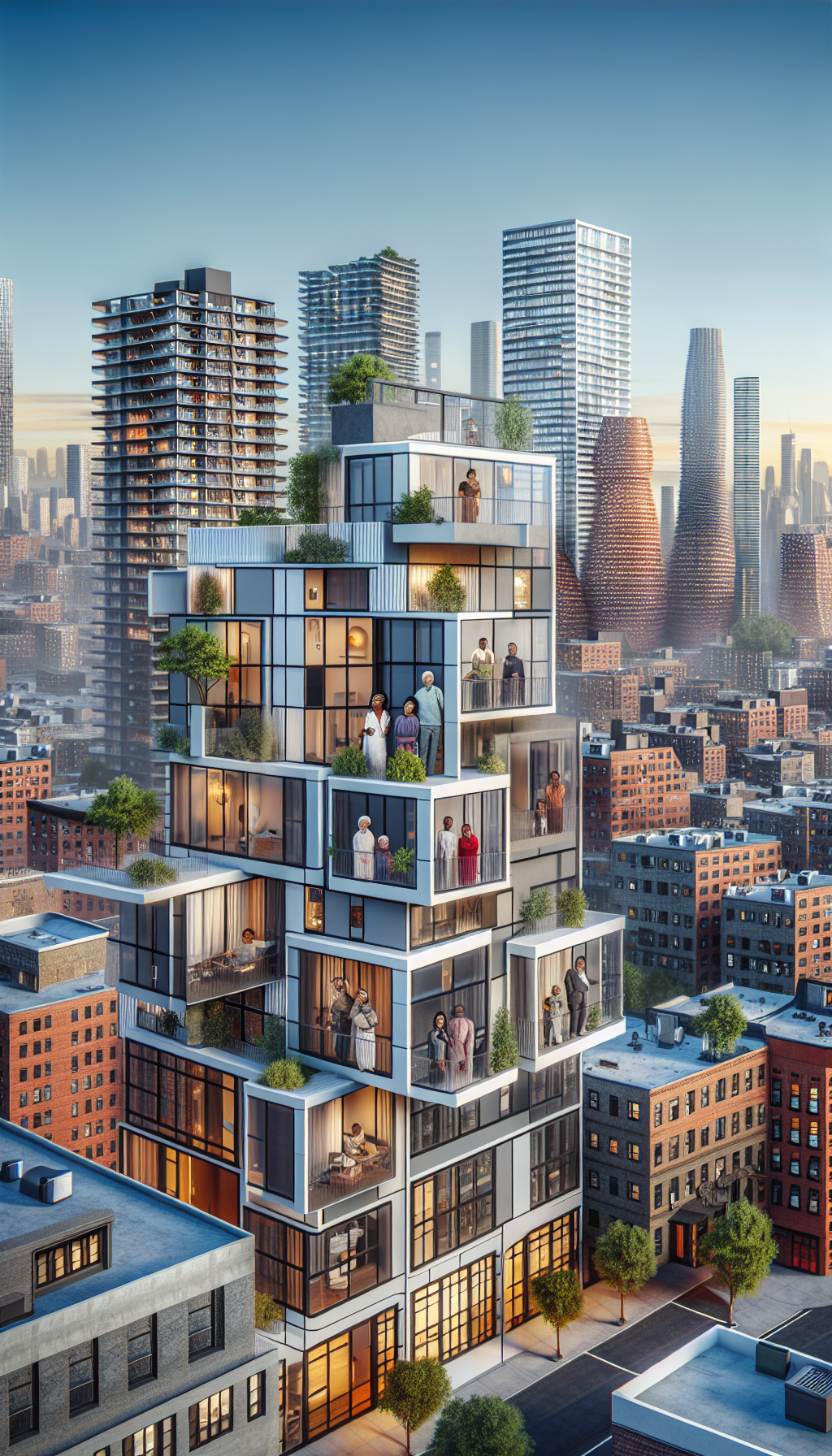Urban Living in 2023: The Rise of Micro-Apartments
The Urbanization Trend
As of 2023, urbanization continues to reshape the landscape of cities worldwide. With over 55% of the global population now residing in urban areas—a figure projected to reach 68% by 2050—cities are becoming congested. This rapid growth has catalyzed a demand for innovative housing solutions, one of which has gained remarkable traction: micro-apartments. These compact living spaces, typically ranging from 200 to 400 square feet, cater to the growing needs of urban dwellers.
Why Micro-Apartments?
Affordability
The skyrocketing cost of living in urban centers has made traditional housing options less accessible. Micro-apartments are often significantly cheaper than their full-sized counterparts, appealing to young professionals, students, and anyone else navigating the challenges of rising rents. In cities like New York and San Francisco, where the average rent for a one-bedroom apartment can exceed $3,000, micro-apartments provide a viable financial alternative.
Efficient Use of Space
Micro-apartments prioritize functionality and efficiency. Clever design solutions maximize every inch of space, incorporating multi-functional furniture, smart storage solutions, and open layouts. The trend toward shared amenities—like communal kitchens, lounges, and co-working spaces—furthers this efficiency by offering residents a sense of community without the need for excessive personal space.
Design Innovations
The design of micro-apartments has evolved dramatically, moving from basic functionality to chic, stylish living. Notable trends include:
-
Sustainability: Many micro-apartment builders are utilizing eco-friendly materials and sustainable construction practices. Energy-efficient appliances, LED lighting, and green roofs are common features.
-
Modular Furniture: Transformable furniture—such as foldable tables, Murphy beds, and movable walls—allows residents to adapt their living space to their immediate needs. This flexibility enhances the overall living experience.
-
Natural Light & Ventilation: Designers are increasingly prioritizing windows and open layouts to create airy, light-filled environments. Features like skylights and large windows not only offer beautiful views but also improve mental well-being.
Target Demographics
Micro-apartments appeal to a diverse range of residents:
-
Young Professionals: As more people delay buying homes and opting instead for job mobility, micro-apartments offer an affordable, flexible living arrangement.
-
Students: College towns are experiencing a rise in micro-apartment developments, allowing students to minimize living costs without sacrificing proximity to campus.
-
Empty Nesters: Older adults looking to downsize embrace micro-living as a way to simplify life and reduce upkeep.
Community Living and Amenities
Integrating community spaces in micro-apartment complexes has become standard practice. These shared areas promote interaction among residents, which is crucial in high-density living scenarios. Features found in these complexes often include:
-
Rooftop Gardens: Many developers are enhancing the lifestyle appeal of micro-apartments with rooftop gardens or terraces, providing green spaces for relaxation and socializing.
-
Fitness Centers: Compact fitness centers within buildings allow residents to maintain an active lifestyle without the need to venture out.
-
Coworking Spaces: As remote work grows, many micro-apartment buildings are incorporating coworking areas, enabling residents to work efficiently from home.
Global Hotspots for Micro-Apartments
Cities around the world are embracing the micro-apartment phenomenon, with unique developments emerging across various settings.
-
Tokyo: Home to some of the smallest living spaces on the planet, Tokyo has long embraced micro-living. Renters work with clever design solutions to create functional and stylish environments, often personalizing them to reflect their individuality.
-
New York City: NYC’s micro-apartments are famous for their innovative layouts, with the city’s Department of Housing Preservation and Development approving developments that maximize space while adhering to rigorous building codes.
-
Berlin: The city features a growing number of micro-apartment projects designed with a strong emphasis on community and sustainability, appealing to the city’s progressive population.
Challenges Facing Micro-Apartments
Despite their rising popularity, micro-apartments face several challenges, including:
-
Zoning Regulations: In some cities, regulatory hurdles can impede the development of micro-apartment buildings, as existing codes often don’t accommodate such small living spaces.
-
Quality of Life Concerns: Detractors argue that micro-apartments can lead to a cluttered, cramped lifestyle, emphasizing the need for effective design and sufficient communal spaces to counteract these issues.
-
Social Isolation: While community-oriented designs aim to foster connections, the concern remains that micro-living can lead to loneliness due to the lack of personal space.
Future of Micro-Apartment Living
The micro-apartment trend is poised for sustained growth, especially as urban populations continue to rise. Ongoing innovations in design and amenities, coupled with a strong focus on sustainability, indicate a promising outlook for this housing solution. As cities address housing shortages and strive to create livable, affordable spaces, micro-apartments are likely to evolve further, possibly incorporating technology such as smart home systems and advanced interior design methodologies.
Conclusion
Micro-apartments epitomize the convergence of efficiency, affordability, and innovative living solutions amid the complexities of urban life. As more individuals and families seek viable living arrangements in densely populated areas, the appeal of micro-living will continue to expand, carving out a unique niche in the urban housing market. The possibilities are endless, and the trajectory suggests an exciting future for urban dwellers opting for a more minimalistic lifestyle.
Additional Resources
-
Online Platforms: Websites like Apartment Therapy and Zillow regularly feature articles on micro-apartment living, design tips, and innovations.
-
Sustainability Guides: Publications focused on sustainable living often include tips for maximizing small spaces, promoting eco-friendly living within urban environments.
-
Architectural Insights: Consult architecture-focused resources for deeper insights into successful micro-apartment designs and trends shaping urban housing.

